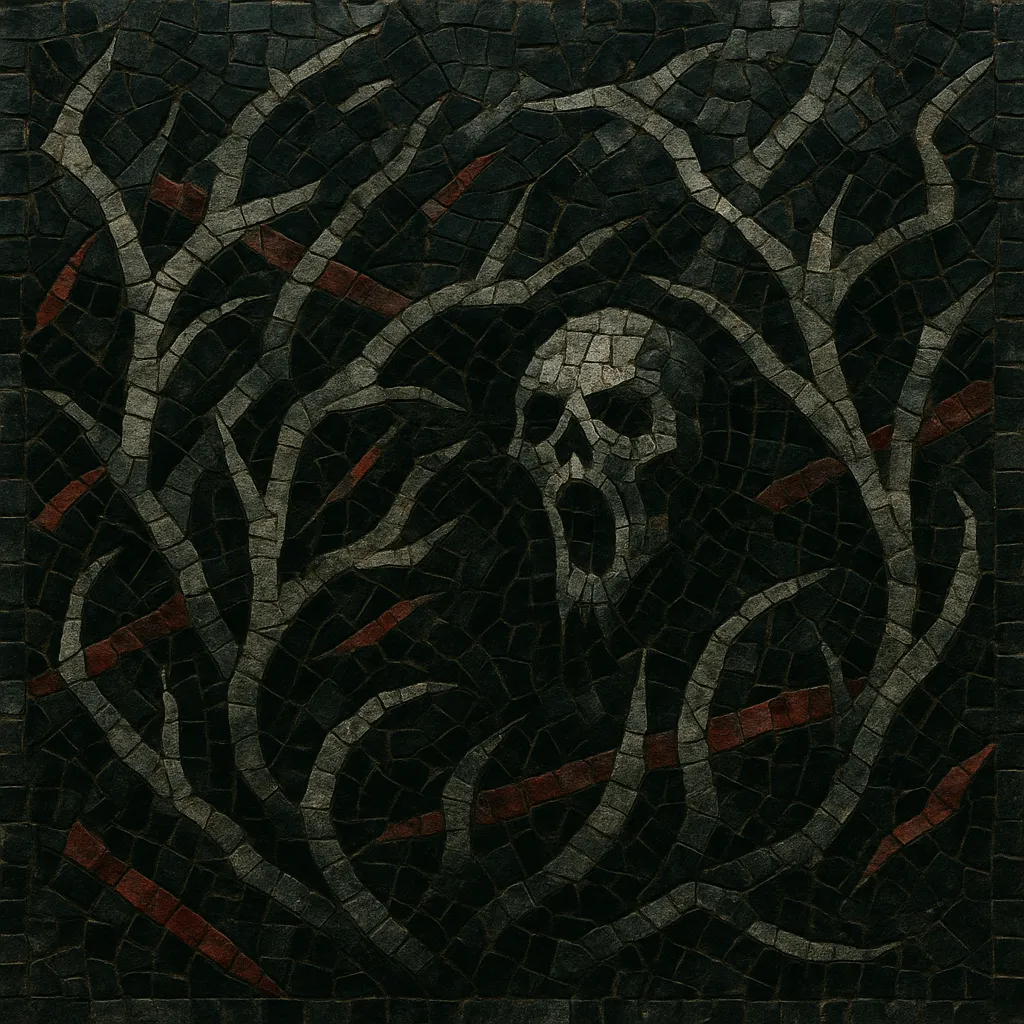Dissonant black metal is a branch of black metal that centers its identity on harsh, non‑functional harmony, angular riff construction, and an atmosphere of spiritual disorientation. Instead of the genre’s traditional triadic tremolo riffs, it favors interval clusters (minor seconds, tritones, and major seconds), chromatic voice-leading, and chord shapes that refuse resolution.
The result is a sound that feels unstable and vertiginous: guitars braid together in contrary motion, drums alternate between blasting barrages and fractured, off‑kilter patterns, and vocals are typically caustic, ritualistic, or liturgical in tone. Production tends toward cavernous space and grainy saturation, emphasizing density and obscurity over polish. Many artists draw on modernist classical ideas (serialism, post-tonal harmony) to intensify the sense of unease.
While the second wave of black metal set the template in the 1990s, the push toward systematic dissonance crystallized in the early 2000s, particularly in France. Blut aus Nord’s "The Work Which Transforms God" (2003) and Deathspell Omega’s "Si Monumentum Requires, Circumspice" (2004) framed black metal through a post‑tonal, theologically charged lens, drawing on modern classical ideas and extreme counterpoint. Parallel experiments in death metal (e.g., Gorguts’ late‑1990s work) provided a proof of concept for tightly controlled dissonance in extreme music.
Labels like Norma Evangelium Diaboli fostered an austere, ‘orthodox’ aesthetic—philosophically dense lyrics, ritual presentation, and meticulous composition. Acts such as Aosoth and Nightbringer (US, in close dialogue with the French school) expanded the language with layered, anti‑cadential riffing and labyrinthine forms.
In the 2010s, Iceland became a major hub. Svartidauði’s "Flesh Cathedral" (2012), Misþyrming’s "Söngvar elds og óreiðu" (2015), and Sinmara’s "Aphotic Womb" (2014) combined volcanic intensity, bleak harmonies, and hypnotic repetition, solidifying a recognizable regional strain: swirling guitar vortices, choral‑like clusters, and glacial dynamic swells.
Elsewhere, Canada’s Thantifaxath, the Netherlands’ Dodecahedron, the US scene around Krallice and Skáphe, and Switzerland’s Schammasch carried the idiom into new structural and timbral territories—stretching meter, flirting with atonality, and occasionally incorporating noise, ambient, or ritual elements. By the late 2010s, dissonant black metal had become a widely recognized compositional approach within extreme metal, influencing blackened death projects and avant‑leaning scenes worldwide.


